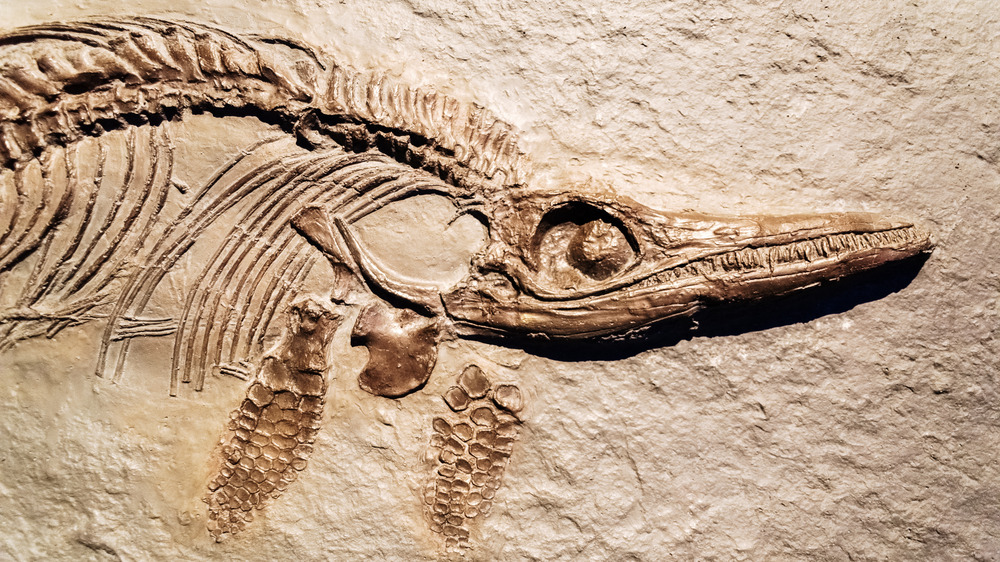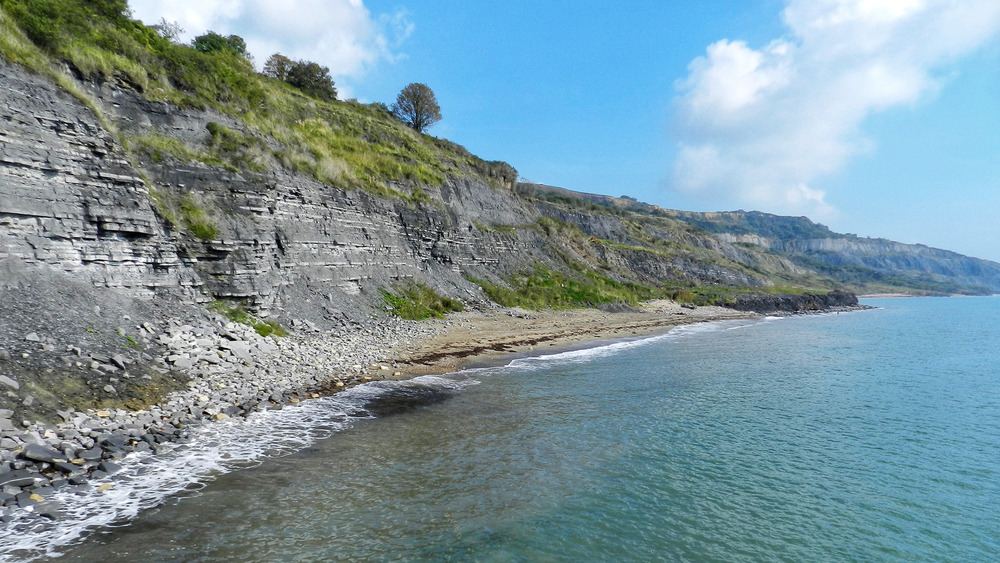The Reptile Fossil Paleontologist Mary Anning Found
Every year, researchers and paleontologists keep making new discoveries and uncovering bigger, smaller, and weirder dinosaur fossils. In 2020 alone, as Live Science shows us, researchers found trapped in amber a tiny, 2-gram creature with 100 teeth, a "reaper of death" cousin of Tyrannosaurus rex with peculiar vertical ridges running from its eyes to its snout, and learned that Spinosaurus could swim. As recently as January 2021, per another Live Science article, the fossilized remains of history's largest dinosaur, a "titanosaur" dubbed Patagotitan, were discovered in the Nequen Province in Argentina. It weighed the same as 12 adult elephants.
Findings such as these are only possible because each new generation of researchers builds on the previous one's labors. Dinosaurs have gotten special attention, doubtlessly because they captivate the imagination, ever since professor Robert Plot found the first fossil ever in 1677 (although he thought it belonged to a big person, per Discovery). Since then, efforts to preserve the past persist even as humans, curiously so, continue to maraud the habitats of living animals.
For every researcher and scientist whose name is splashed across textbook pages and academic articles, there are hundreds upon hundreds of others who do the work necessary to bring us all to a place of understanding. One such researcher, the self-taught paleontologist, sketch artist, and early 19th-century "natural scientist" Mary Anning, stands prominently among her peers. Her hands-on fossil digging and cataloging influences us even now, especially her discovery of a "fish lizard" in 1811.
Ichthyosaurus, Plesiosaurus, Pterodactyl, and more
Mary was only 12 years old when she discovered the remains of what scientists at the time thought was merely a strange kind of crocodile, per the National History Museum. After all, without knowledge of natural selection, folks just assumed that fossils belonged to creatures that had migrated from other, far-off places. Mary's discoveries didn't stop with the Ichthyosaurus ("fish lizard") in 1811, though, but continued with the Plesiosaurus ("near to reptile") in 1823, the flying Pterodactyl ("winged finger") in 1828, and more.
Even though Mary, as a woman, saw her name swept under the rug of history while she was alive, she was indeed in the right place and the right time to make her findings. Her naturally curious nature was stoked by the region where she grew up, Lyme Regis along the seaside cliffs of the English Channel, an area so rich with fossils that it's been dubbed the "Jurassic Coast" and made into a UNESCO World Heritage Site, as the Jurassic Coast Trust outlines.
Amateur fossil hunters — like how Mary herself would have once been considered — still flock to Lyme Regis to poke around the shore. The Lyme Regis Museum has a webpage dedicated to the region's most famous paleontologist, where visitors can see exactly how stunning of an illustrator she was. Mary's legacy is so important that NASA, in a 2012 Mars rover Curiosity mission, took her to the red planet by naming several drills holes in her honor.

